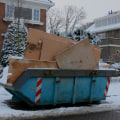Cutting down trees is a task that requires careful planning, the right equipment, and a strong understanding of safety protocols. Whether removing a tree for safety reasons, disease prevention, or landscaping purposes, it is essential to follow proper procedures to avoid unnecessary risks and property damage. Trees are valuable to the environment, providing shade, oxygen, and wildlife habitat, but sometimes they become hazardous or interfere with construction projects. Knowing when and how to remove a tree efficiently can help homeowners and property managers maintain a safe and aesthetically pleasing landscape while minimizing negative environmental impacts.
Assessing the Need for Tree Removal
Before cutting down a tree, it is important to assess whether removal is truly necessary. In many cases, trimming or pruning may be enough to resolve issues such as overhanging branches or excessive shading. However, trees that show signs of disease, structural instability, or root damage may pose serious safety risks. A leaning tree, particularly one close to a home or power lines, is a major red flag that removal is needed. Additionally, trees with large dead branches, visible decay, or fungal growth at the base may be at risk of falling, making them a hazard to people and property. Consulting a certified arborist can help determine whether a tree should be cut down or if other management strategies can be applied to preserve its health.
Choosing the Right Time for Tree Removal
The timing of tree removal can affect both the efficiency of the process and the surrounding landscape. While trees can technically be cut down at any time of the year, winter and late fall are often the best seasons for removal. During this period, trees are dormant, making it easier to assess their structure without the obstruction of leaves. Additionally, the ground is often firmer in colder months, reducing soil disruption and making cleanup more manageable. If a tree poses an immediate danger due to storm damage or disease, emergency removal may be necessary regardless of the season. Working with professional tree removal services ensures that the job is handled safely and efficiently, regardless of the timing.
Safety Considerations When Cutting Down Trees
Tree removal is a high-risk activity that requires knowledge, skill, and specialized equipment. The process involves cutting, directing the fall, and clearing debris, all of which can be dangerous if not properly executed. For large or hazardous trees, hiring a professional tree removal company is the safest option. Experts use techniques such as sectional felling, where trees are removed in segments rather than in one large cut, to prevent damage to nearby structures. Homeowners attempting to remove trees on their own should take extra precautions, including wearing protective gear, using the right saws, and ensuring there is a clear escape route in case the tree falls unpredictably.
Managing Tree Debris and Aftercare
Once a tree is cut down, dealing with the remaining debris is an important step. Large branches and logs can be repurposed for firewood, mulch, or woodworking projects. Stump removal is another consideration, as leftover stumps can become an eyesore or create tripping hazards. Grinding the stump down or using natural methods to accelerate decomposition can help clear the area for replanting or other landscaping changes. If the removed tree played a significant role in shading or soil stability, replanting with a suitable replacement tree can help maintain the balance of the landscape.
Preventing Property Damage and Working with Professionals
Tree removal can have a direct impact on nearby structures, including homes, fences, and utility lines. Before beginning the cutting process, it is essential to evaluate potential risks and take preventive measures. This is especially important for trees close to roofs, where falling branches or improper cutting angles can cause serious damage. Homeowners working on tree removal projects near their house should consider consulting roofing experts such as All County Roofing to ensure that falling debris does not compromise the integrity of the roof. Professionals can inspect for potential vulnerabilities and provide recommendations for protecting the structure during the removal process.
Final Thoughts on Tree Removal
Cutting down trees is a significant decision that requires careful planning, safety precautions, and proper execution. While tree removal is sometimes unavoidable, it should always be approached with environmental considerations and a commitment to safety. Consulting with arborists, hiring professionals when necessary, and taking the appropriate steps to manage debris and prevent property damage can make the process smooth and efficient. By following best practices and ensuring that the right precautions are in place, homeowners can maintain a safe, attractive, and well-balanced outdoor environment.



